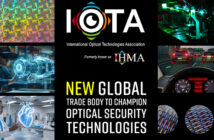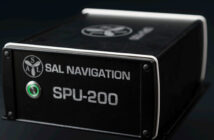Approaching the immigration counters at the Soekarno-Hatta International Airport in Jakarta, Indonesia you are required by the immigration officer to not only provide your passport, but also a fingerprint scan as well as stand for a personal photograph.
At times the approach lines are long and the process seems tedious as you wonder what the information will be used for and who will have access to it. Collection of your personal identification characteristics by technical means might seem intrusive and a bit futuristic but it has increasingly become a part of our everyday lives.
Biometric information is that unique part of a person that distinguishes them from all others. People can change their names, addresses, telephone numbers and identification documents but cannot change their collective biometric identity.
WHAT ARE BIOMETRICS?
Biometrics are technologies used for measuring and analyzing a person’s unique characteristics. There are two types of biometric characteristics: behavioral and physical.
Behavioral biometrics are generally used for verification while physical biometrics can be used for either identification or verification. Behavioral traits include vocal patterns, signature styles, keystroke analysis and the manner in which a person walks (gait).
Physical biometrics include facial features, hand/palm prints, fingerprints and eyes (iris/retina), with fingerprints being the most widely recognized and used biometric, both in the public and private sectors. Biometric data is collected and stored on a database where it can be accessed and compared at a later date to verify or identify a particular person.
Biometrics are being used in both the public and private sectors, routinely controlling access to everything from computers and computer accounts, banks and financial records to office and residential buildings, sports venues, theme parks and country border crossings. This technology is often combined with the necessity to use a password, magnetic stripe card (also known as a swipe card) and/or other means to gain access, thus adding additional security precautions.
TECHNOLOGY
The equipment used to capture biometric data comes in both portable and non-portable sizes. The initial entry of biometric information into a database via this equipment is called an enrollment. Biometric data is captured by various devices, to include fingerprint, hand/palm and iris scanners, as well as cameras to capture facial features.
Some devices often combine all features within a single piece of equipment. Once the individual’s biometric data is entered into the device, it is then uploaded into a main computer database and stored for future identification and/or authentication purposes.
BIOMETRICS IN THE PUBLIC SECTOR
Border Control Systems in many countries utilize biometrics to identify and track travelers, effectively enhancing the safety and security of its borders. Biometric passports are being used in many countries and include smart card technology to catalogue and database personal information, easily retrievable through computer interface.
In Southeast Asia for instance Indonesia, Malaysia, Singapore and Thailand all utilize biometrics technology for border entry control. The U.S. utilizes a small integrated circuit or “chip” embedded in the passport. The chip contains stored biometric data, to include a photograph and a digitized signature to aid in authentication of the document.
For U.S. Visas the chosen biometric identifier method is a digital photo and electronic fingerprints. All fingers of a visa applicant are electronically scanned in a quick, inkless process during the consular officer’s interview with the applicant.
Government and law enforcement agencies have used biometrics for many years, with fingerprinting being the standard and most well-known method of collection around the world. Government employees and contractors requiring security clearances are often fingerprinted, as are military recruits, with subsequent database checks conducted to ascertain past affiliations, criminal records and suitability for employment. Individuals involved in criminal investigations are routinely fingerprinted and their data is entered into a centralized criminal database, if one exists.
The U.S. Federal Bureau of Investigation (FBI) utilizes the Integrated Automated Fingerprint Identification System (IAFIS), the largest biometric database in the world, to help solve and prevent crime and catch criminals and terrorists. Often times the safety and security of the public, as well as the successful resolution of a criminal case relies on the ability to accurately and rapidly recall this stored biometric data. A single fingerprint left behind at a crime scene can lead to the identification of a suspect and successful prosecution of a case.
The U.S. Department of Defense routinely utilizes biometrics technology to facilitate the security clearance process, control access to sensitive facilities, conduct criminal and subversive record background checks on foreign national contractors seeking to do business with the U.S. Government, track militants and insurgents as well as positively identify individuals during personnel recovery operations.
Maritime Interdiction and anti-Piracy Operations routinely involve the use of biometrics to positively identify and/or document the individuals encountered, regardless of their claimed identity or identification documents produced.
BIOMETRICS USE IN THE PRIVATE SECTOR
The use of biometrics technology in the private sector has grown exponentially, serving to not only protect personal property and financial transactions but also ensure employee integrity. Multi-factor authentication methods, incorporating biometrics, are being used to control access to everything from personal computers, ATM machines, residential and office complexes to just about every mode of transportation to include luxury automobiles, aircraft and boats.
Businesses utilizing fingerprint biometrics as part of their point-of-sale systems report an improvement in employee accountability, an increase in sales, and a reduction in both unauthorized transactions and payroll fraud. The employee time card clock-in method allowed for anyone to “punch” a co-worker’s timecard, often when the co-worker did not come to work. Positive identification of an employee is now gained via the requirement to be physically present and scan their fingerprint to establish actual work attendance.
Financial institutions in several countries, to include Japan, employ the use of “Finger vein” technology as part of their multi-factor authentication approach for ATM customers. In addition to utilizing a bank card and/or personal identification number (PIN), customers place their finger on the console and an infrared light detects a unique pattern of micro-veins beneath the surface of the finger. This is then matched with a pre-registered profile to verify an individual’s identity.
Biometrics technology and its use are now commonplace in the recreational entertainment and sports industries. Family entertainment companies, to include The Walt Disney Company Resorts and SeaWorld Parks and Entertainment, utilize biometrics to control the use of theme park access passes, ensuring that the original purchaser does not, without proper authorization, transfer use of the same pass to multiple users.
This ensures that everyone must purchase their own pass, effectively increasing park revenue and decreasing fraudulent pass use. Sports venue management includes stadium and arena security, with large venues often incorporating biometrics technology in the ticketing and entrance processes. Not only does this serve to control fraudulent ticket and pass sales but also assists law enforcement in identifying and controlling potential problems through the identification of known or suspected criminals and terrorists.
PART OF OUR EVERYDAY LIVES
As you can see, the use of biometrics to ensure our safety and security, as well as business integrity is commonplace. Our photograph and fingerprints have been utilized to verify our identities, protect our lives and secure our assets for many years now. Biometric identifiers have been and will continue to be the standard means used to document and verify identities within both the public and private sectors.
Biometrics technology has become more and more visible to us, greeting our arrival at airports, seaports, land borders, businesses and residential complexes. As we understand more about this technology and its uses we can develop a better appreciation for the security it provides in our everyday lives.
For additional information please see “Biometrics: Enhancing Security in Organizations”, Babita Gupta, IBM Center for The Business of Government, 2008.
About the Author
 Scott M. Bernat is a civilian Special Agent of the US Naval Criminal Investigative Service (NCIS), currently assigned to the US Embassy Jakarta, Indonesia Force Protection Detachment as the Resident Agent in Charge and Chief of US Military Security. During his 24+ year career, he has worked as a security professional throughout Asia, Australia/Oceania, Central America, Europe, the Middle East, and the United States. See http://id.linkedin.com/in/scottbernat
Scott M. Bernat is a civilian Special Agent of the US Naval Criminal Investigative Service (NCIS), currently assigned to the US Embassy Jakarta, Indonesia Force Protection Detachment as the Resident Agent in Charge and Chief of US Military Security. During his 24+ year career, he has worked as a security professional throughout Asia, Australia/Oceania, Central America, Europe, the Middle East, and the United States. See http://id.linkedin.com/in/scottbernat






